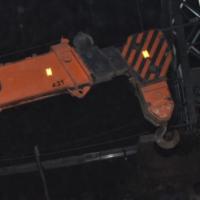The confidential reporting system received information about five specific incidents in which material fell from bridges, highlighting the potential danger of hidden defects and safety-critical fixings.
In one case, a member of the public reported being hit by concrete falling from an underbridge. Responsibility for the bridge was in a 'grey' area between two owners and the organisation concerned recommended that clear and transparent demarcation is required for all assets where maintenance liability is shared. Where defects are identified then liaison between liable parties should be carried out to ensure risks are managed appropriately.
In another case, a 4.5m length of concrete encasement detached from a bridge soffit and fell onto a public area. Although no-one was injured, the incident could have caused a fatality. The root cause was corrosion of the reinforcement after cracking of the concrete, but differential temperature between the metal beam and concrete had a part to play in the final failure – around that time a temperature of 34°C was recorded.
Missing or broken fixings were also highlighted; a report was received from a local authority about a fracture in a footway attached to the side of a bridge structure. The footway was supported on cantilevered members and four of the eight bolts holding these in place were found to have fallen out.
The Standing Committee on Structural Safety has reported many times on the dangers of falling material which in some cases has led to injury and death. All owners have a responsibility to manage the risk and that starts with an awareness of the hazard followed by condition inspection to assess the likelihood.
The newsletter also highlights the issues raised by joint ownership of bridges – often one party assumes that the other party is maintaining the asset and/or is responsible for parts of it. In one case an owner carried out no inspections or maintenance, so it was fortunate that the operator of the infrastructure underneath, who did not know it was not their structure, inspected and maintained it. In a similar case no inspections were carried out due to misunderstanding about ownership.
SCOSS stressed that the owners of structures over and under roads and railways have an obligation to inspect and maintain these structures in accordance with the procedures set out by the operator of that infrastructure. There is need for a robust asset ownership matrix, both within separate divisions of one entity, but also where asset ownership may be shared between separate entities, says SCOSS. It is also important that there is adequate quality control of structurally significant change such as alterations and renewals, and of inspections.



